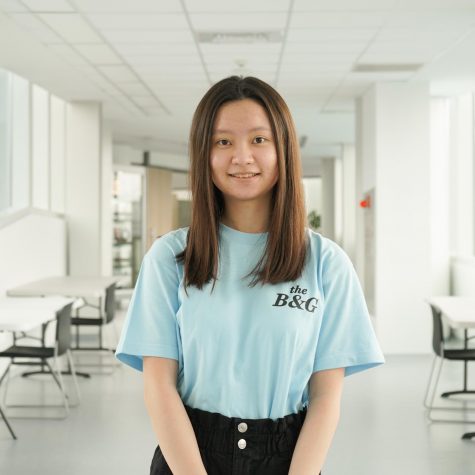History of Minorities in America
History of Minorities in America is a history elective taught by Dr. Erika Soublet. In the 2020-2021 school year, there are just five students enrolled in this little-known course.
In this class, students learn history from the perspective of various minority groups who are not covered in depth for other U.S. history classes, which include women, African Americans, Native Americans, people with disabilities, Asian Americans, Latinx Americans and members of the LGBTQIA+ community. Through seminar style teaching, students learn about the ways minorities have impacted American history, and their influence on current events. Students help lead class seminars and devise lesson plans, and through discussing articles, podcasts and movies, students explore connections between history and current issues.
Dr. Soublet wishes her students can learn that history is much more diverse than what we see on the surface.
“People of all ethnicities, genders, sexual orientations, religions and more have contributed and continue to contribute to America,” Dr. Soublet said. “I want students to understand that the issues we’re currently facing are rooted in history. Understanding how problems came to be is a first step to figuring out how to solve them.”
Dr. Grace Cheng Dodge, Mr. Ryan Haynes and Ms. Jessica Huang (‘11) joined students in the History of Minorities in America class to discuss identity. [PHOTO COURTESY OF TAS COMMUNICATIONS]
Fashion and Costume Design
Fashion and Costume Design is taught by Ms. Jessica Huang (‘11), the assistant theater manager at TAS. The course is focused on learning how to sew both by hand and by using the sewing machine. Students learn about current trends in fashion, including costume design in film and theater, as well as a wide range of other topics, such as sewing production in prisons.
A typical class day starts with a pow wow session, where students discuss an article they read for homework by asking questions and sharing key takeaways. The rest of the class is focused on sewing and familiarizing themselves with different sewing techniques and sewing machines.
Students get to choose their own projects and design their own clothing. Depending on the musical or play that year, students may also have the opportunity to participate in the costume crew, putting together and sewing costumes for the cast.
“What’s fun about this is that it is hands-on, but sometimes I joke and say it is a social studies course, because we talk about so many topics related to history, lifestyle and culture,” Ms. Huang said.
Fashion and Costume Design has multiple projects throughout the year, such as designing tote bags. [SHARON LEE/THE BLUE & GOLD]
Robotics Mentoring
Robotics Mentoring, taught by Mr. Jason Kiang, is an interactive course where upper school students mentor Grade 3 and Grade 5 students on the basics of programming. This class fulfills the Computer Science/Robotics graduation requirement and requires no prerequisites to enroll. The classes take place during A5 and B5, with eight to ten students in each class.
Each upper school student in the class is paired with three to five “little buddies,” who they meet with every week to work on their projects.
Grade 5 students work on Lego Mindstorms, where they program robots to perform various challenges purchased from the First Lego League. On the other hand, Grade 3 students focus on creative programming projects, in which they design robots according to a given theme. The theme this year is increasing physical exercise around the world.
Being the only class that allows students across divisions to collaborate, this class is a great way to develop new skills.
“If you like little kids and you want to build mentorship skills, leadership skills and collaborative soft skills, this class is a great way to achieve that,” Mr. Kiang said.
The Robotics Mentoring course allows upper and lower school students to work on creative programming projects. [SHARON LEE/THE BLUE & GOLD
Writing Workshop & Seminar
The Writing Workshop & Seminar class taught by Ms. brenda Lin (lowercase intentional) is a creative writing workshop that explores various genres including short stories, poems, graphic narratives and many more. Students get to read each other’s works and receive feedback from their peers, and they learn to develop their own voice in writing.
“There’s so much going on inside [at this age] and creative writing is a great outlet. What I hope to accomplish is to convince people that creative writing can be applied to everything else you do,” Ms. Lin said.
Her favorite part of this class is her students’ open-mindedness to share their own perspectives. “It takes courage to be honest in your work, sometimes it can be challenging to put yourself out there. I think my job is to make sure we’re in a safe place and people feel comfortable sharing,” she said.
Students also have the opportunity to submit their works to magazines and competitions throughout the year, although it is not the main focus of the course. The seminar aspect of the class explores various texts as well as different forms of storytelling through multimedia: podcasts, videos and artworks, where students learn to emphasize and adapt to different contexts.
Ultimately, Ms. Lin encourages students who are interested in the writing world to sign up, and she hopes that this class can provide more students the opportunity to channel their creativity in writing.
Students in the Writing Workshop & Seminar class had the opportunity to write their own children’s books. [PHOTO COURTESY OF TAS COMMUNICATIONS]

![[SHARON LEE/THE BLUE & GOLD]](https://blueandgoldonline.org/wp-content/uploads/2021/02/robotics.png)
![Helen Zia talks to students in the auditorium at Flex. [ANNABELLE HSU/THE BLUE&GOLD]](https://blueandgoldonline.org/wp-content/uploads/2025/09/helen-zia-1200x800.jpg)
![[PHOTOS COURTESY OF MS. VINOD]](https://blueandgoldonline.org/wp-content/uploads/2025/09/Untitled-design-1200x675.png)
![Mr. Sean Patella-Buckley [PHOTO COURTESY OF MR. PATELLA-BUCKELY], Mr. Yoonsoo Kang [PHOTO COURTESY OF MR. KANG], Ms. Mikayla Patella-Buckley [PHOTO COURTESY OF MS. PATELLA-BUCKLEY], Ms. Lien Martens [PHOTO COURTESY OF MS. MARTENS],](https://blueandgoldonline.org/wp-content/uploads/2025/09/teachers-1200x675.png)
![Sofia Valadao [Erin Wu/The Blue&Gold]
Erin Wu [Annabelle Hsu/The Blue&Gold]](https://blueandgoldonline.org/wp-content/uploads/2025/05/erin-sofia-pic.png)
![Dr. Simeondis, Mr. Anderson. [Annabelle Hsu/The Blue&Gold]](https://blueandgoldonline.org/wp-content/uploads/2025/05/teachers-1200x675.jpg)
![[PHOTO COURTESY OF UNCULTURED, JUNIPER AND CO.]](https://blueandgoldonline.org/wp-content/uploads/2025/05/student-businesses-1200x675.png)
